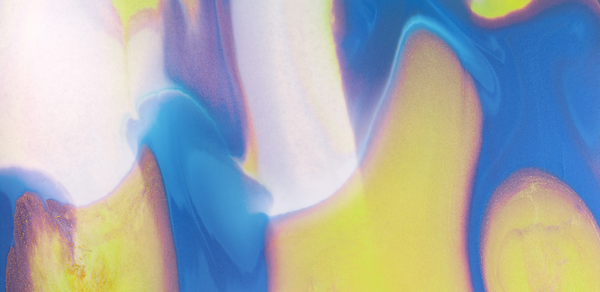Vulvodynia and provoked vestibulodynia
A guest blog authored by Hannah Crumpton
As women’s health physiotherapists, we often find ourselves advocating for conditions that are underrepresented in mainstream conversations. One such condition is provoked vestibulodynia; A complex and often misunderstood and misdiagnosed, chronic pain syndrome, affecting the vulvar vestibule. For countless women, the repercussions of this go much further than disrupting relationships and sex lives, instilling feelings of isolation, frustration, and even shame.
This blog aims to shed light on provoked vestibulodynia - what it is, why it happens, and how physiotherapy can play a transformative role in managing it. By fostering awareness and equipping women with evidence-based information, we hope to empower them to better understand their bodies and take an active role in their pelvic health journey.
What are Vulvodynia and Provoked Vestibulodynia PVD (PVD)?
To understand PDV we need to first talk about vaginal anatomy.

Vulvodynia is a more generalised term used to describe vulval pain lasting for more than 3 months, without a clear identifiable cause (such as infection or skin condition).
It can be further subdivided based on defining features:
Onset
- Primary - The pain has always been present as long as the individual can remember (for example with first attempt at inserting tampon).
- Secondary - There was a time when touch of the area was not painful.
Provocation
- Spontaneous – Symptoms occur without any provoking physical contact.
- Provoked- Symptoms only occur with physical contact.
Location
- Generalised - Wide spread pain throughout the Vulval region. Possible areas for pain include clitoris, labia majora, labia minora, vestibule, vaginal opening, perineum.
- Localised - The pain is only in one specific area such as the vulval vestibule or clitoris.
Provoked Vestibulodynia
PVD is the most common of vulvodynia, thought to effect between 3-18% of women.
Symptoms of PVD
- Pain on penetration with intercourse
- Tenderness of the vestibule area even on light touch with a cotton Q-tip
- Symptoms lasting more than 3 months
What do we know about the cause of PVD?
Unfortunately, the exact cause of PVD isn’t known however there are some factors which we know are associated with PVD.
Thrush (Vulvovaginal Candidiasis, VVC)
- There is a known link between Thrush a PDV. Many women will see a care provider for thrush and receive treatment for this. Once the infection has cleared, they are still left with pain and burning sensation of PVD, in the absence of thrush.
Genetics
- Genetic variations put some women at increased risk of developing thrush. Others have changes that cause an exaggerated inflammatory response within the body.
Hormonal factors
- Combined hormonal contraceptives have been linked to PVD.
Structural changes
- Some women with pelvic organ prolapse report vulva pain.
Nervous system changes
- Changes to the nervous system leading to increased nerve sensitivity
Psychological factors
- Anxiety, depression, childhood trauma and post traumatic stress disorder are risk factors for the development of vulvodynia.
Musculoskeletal factors
- It has been found that women with PVD have high tone of their pelvic floor muscles, possibly leading to imbalances in the connective tissue, soft tissue and neural tissue in the area.
What are the treatment options for PVD?
If you are concerned that you may have a vulval pain condition, is it important to see your GP for an assessment and to rule out any other potential causes and discuss your symptoms and treatment options. Doctors may consider prescribing medication that acts on the central nervous system to modify the bodies response to the pain. They may also consider prescribing a cream which acts to reduce sensation or numb the affected area.
Onward referral to specialised healthcare professionals such as gynaecologist, pelvic health physiotherapists and psychologists may also be recommended.
Physiotherapy:
Physiotherapy takes a central role in the management of PVD. Research studies demonstrate that multimodal treatment is most effective, using various different techniques and approaches.
Treatment may include:
- Education
- Biofeedback (machines that read ability to contract and relax the pelvic floor)
- Manual techniques
- Dilators
- Stretches
- Relaxation
- Breath work
- Electrical stimulations and the use of TENS machines
Research shows that physiotherapy has significant improvements in pain sexual function in 71%-80% of women with PVD.
Living with provoked vestibulodynia can feel overwhelming and isolating, but understanding the condition is the first step towards reclaiming your health and well-being. Through physiotherapy and a multidisciplinary approach, relief and improvement are possible. Remember, you are not alone—there are professionals and resources available to support you in this journey. With the right care and guidance, meaningful progress can be achieved, allowing you to take confident steps toward a better quality of life.
You can find more information and support about vulval pains at The Vulval Pain Society.
Hannah Crumpton runs Nest Physiotherapy, a private physiotherapy practice in Essex, UK. For more information and to work with Hannah in-person or remotely you can contact her at nestphysio@gmail.com and www.nestphysiotherapy.co.uk
You can find a Pelvic Health physiotherapist in your area at the POGP (Pelvic, Obstetric and Gynaecological Physiotherapy) network.


